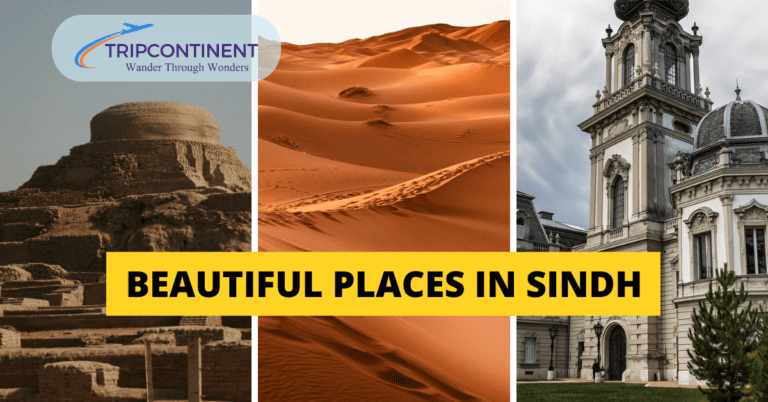All You Need to Know About the Seven Wonders of the World
The Seven Wonders of the World are renowned landmarks that showcase the incredible achievements of human creativity, engineering, and architecture throughout history. These wonders are divided into different categories: the ancient, medieval, and modern worlds. Each set of wonders reflects the cultures and civilizations that produced them, offering a glimpse into their values, skills, and ambitions.
Ancient Wonders
The original Seven Wonders of the Ancient World were a list of extraordinary constructions known to the Greeks. They included:
- The Great Pyramid of Giza (Egypt)
- The Hanging Gardens of Babylon (Iraq)
- The Statue of Zeus at Olympia (Greece)
- The Temple of Artemis at Ephesus (Turkey)
- The Mausoleum at Halicarnassus (Turkey)
- The Colossus of Rhodes (Greece)
- The Lighthouse of Alexandria (Egypt)
1. The Great Pyramid of Giza
The Great Pyramid of Giza is one of the most iconic structures in the world, located in Giza, Egypt. It is the oldest of the Seven Wonders of the Ancient World and the only one still standing today.
It was built around 2580-2560 BC during the Fourth Dynasty of the Old Kingdom of Egypt. It was originally about 481 feet tall, now slightly shorter due to erosion. The pyramid consists of approximately 2.3 million limestone and granite blocks, each weighing between 2.5 to 15 tons.
The Great Pyramid was constructed as a tomb for the Pharaoh Khufu (also known as Cheops). It was the tallest man-made structure in the world for over 3,800 years. The precision of the construction, with its alignment to the cardinal points and the exactness of its angles, demonstrates the advanced knowledge and skills of ancient Egyptian engineers. The pyramid was originally covered in smooth white casing stones that reflected the sun’s light, making it shine brightly.
Visiting the Great Pyramid of Giza is a must for travelers to Egypt. The site is part of a larger complex with two smaller pyramids, the Sphinx, and several cemeteries. You can explore the pyramid’s interior, although the narrow passageways can be challenging to navigate. The Giza Plateau offers stunning views, and many visitors enjoy camel rides around the site. The best time to visit is early in the morning or late in the afternoon to avoid the midday heat.
The Great Pyramid of Giza is the last remaining of the Seven Wonders of the Ancient World.
You might also like: 10 Most Expensive Countries in the World
2. The Hanging Gardens of Babylon
The Hanging Gardens of Babylon are one of the most legendary wonders of the ancient world, known for their lush greenery and innovative engineering. Though their existence is debated among historians, they remain a symbol of human ingenuity and architectural marvel.
It is believed to have been built around the 7th or 6th century BC by King Nebuchadnezzar II, of the Neo-Babylonian Empire. The gardens were said to be terraced and supported by stone columns to resemble a large green mountain.
The Hanging Gardens were reportedly created by King Nebuchadnezzar II for his wife, Queen Amytis, who missed the green hills and plants of her homeland, Media (in modern-day Iran). The gardens were an engineering marvel of their time, using an intricate system of irrigation to water the plants from the nearby Euphrates River. This allowed for the cultivation of a wide variety of trees, shrubs, and vines.
While the exact location of the Hanging Gardens remains uncertain, the ruins of Babylon are a UNESCO World Heritage Site and are open to visitors. Located about 55 miles south of Baghdad, the site includes remnants of the ancient city, such as the Ishtar Gate, the Lion of Babylon statue, and the reconstructed ruins of the Babylonian palace.
3. The Statue of Zeus at Olympia
The Statue of Zeus at Olympia was a masterpiece of ancient Greek sculpture and one of the Seven Wonders of the Ancient World. Created by the renowned sculptor Phidias, it stood as a symbol of power and majesty within the sanctuary of Olympia in Greece.
It was created by Phidias, a famous Greek sculptor known for his exceptional talent. The statue was made of ivory and gold-plated bronze, standing over 40 feet tall. It was dedicated to Zeus, the king of the Greek gods, and served as the focal point of religious worship and athletic contests during the ancient Olympics.
The Statue of Zeus was commissioned around 435 BC by the citizens of Olympia to honor their chief deity. Phidias worked tirelessly on the statue, imbuing it with a sense of divine grandeur and realism. The statue depicted Zeus seated on a magnificent throne, holding a scepter in one hand and a statue of Nike, the goddess of victory, in the other. The throne was adorned with scenes from Greek mythology and supported by lions and eagles.
Visiting Olympia today allows visitors to explore the ruins of the ancient sanctuary, where the Statue of Zeus once stood. While the original statue no longer exists (it was likely destroyed in the 5th or 6th century AD), the site remains a significant archaeological and historical site.
4. The Temple of Artemis at Ephesus
The Temple of Artemis at Ephesus was an ancient Greek temple dedicated to the goddess Artemis, located in Ephesus (modern-day Turkiye). It was one of the Seven Wonders of the Ancient World and a significant religious and cultural site in antiquity.
The temple was originally built around 550 BC during the Archaic period of ancient Greece. It was one of the largest temples of the ancient world, measuring about 377 feet long, 180 feet wide, and supported by 127 columns, each 60 feet tall. The temple was dedicated to Artemis, the Greek goddess of hunting, wild animals, and fertility.
The Temple of Artemis was designed and constructed by the architect Chersiphron and his son Metagenes. It was rebuilt several times over the centuries due to destruction by floods and arson. The most famous reconstruction was sponsored by the Lydian king Croesus around 550 BC. The temple became a symbol of Ephesian wealth and prosperity, adorned with sculptures and artworks commissioned by various kings and rulers.
Today, visitors to Ephesus can explore the ruins of the ancient city, including the remains of the Temple of Artemis. While little of the actual structure remains, archaeological excavations have uncovered fragments of sculptures and columns, providing insights into its grandeur and significance in ancient times.
5. The Mausoleum at Halicarnassus
The Mausoleum at Halicarnassus, located in present-day Bodrum, Turkiye, was an ancient tomb built for Mausolus, the satrap (governor) of Caria, and his wife Artemisia II. It is celebrated as one of the Seven Wonders of the Ancient World and was renowned for its grandeur and architectural innovation.
The construction was done between 353 and 350 BC. It was designed by Greek architects Satyros and Pythius. The mausoleum was a massive structure, standing approximately 148 feet tall, with a base measuring about 92 feet by 131 feet. It was adorned with intricate sculptures and friezes depicting scenes from Greek mythology and the lives of Mausolus and Artemisia II.
The Mausoleum at Halicarnassus was commissioned by Artemisia II after the death of her husband Mausolus. It combined elements of Greek, Lycian, and Egyptian architectural styles and was constructed using marble and decorated with sculptural reliefs. The mausoleum was surrounded by a courtyard and featured a stepped pyramid-like roof topped with a statue of a chariot and horses.
Today, visitors to Bodrum can explore the archaeological site of the Mausoleum at Halicarnassus. Although the structure was largely destroyed by earthquakes in the medieval period, fragments of the sculptural decorations and the foundation of the mausoleum have been excavated and are displayed in the nearby Bodrum Museum of Underwater Archaeology.
Also read: Most Visited Cities in the World
6. The Colossus of Rhodes
The Colossus of Rhodes was a massive statue of the Greek sun god Helios, erected on the island of Rhodes in Greece. It stood as one of the Seven Wonders of the Ancient World, symbolizing the island’s strength and unity.
It was built between 292 and 280 BC. The statue was designed and sculpted by Chares of Lindos, a Greek sculptor. It was made of bronze plates over an iron framework, standing about 108 feet tall.
The Colossus of Rhodes was commissioned to celebrate Rhodes’ victory over an invading army in 305 BC. It took approximately 12 years to complete and was one of the tallest statues of the ancient world. The statue depicted Helios, the patron god of the island, standing with one foot on each side of the harbor entrance, holding a torch in one hand. It was a symbol of protection and prosperity for the city of Rhodes.
Visitors to Rhodes can explore the archaeological sites and museums that showcase the history of the Colossus. While the statue itself was destroyed by an earthquake in 226 BC, remnants of its base and parts of the surrounding area can still be seen.
7. The Lighthouse of Alexandria
The Lighthouse of Alexandria, also known as the Pharos of Alexandria, was a towering structure located on the small island of Pharos, off the coast of Alexandria in Egypt. It was one of the most famous landmarks of the ancient world and served as a beacon for sailors navigating the Mediterranean Sea.
It was built during the reign of Ptolemy II Philadelphus and completed around 280 BC. It was designed by the Greek architect Sostratus of Cnidus. The lighthouse stood approximately 330 feet tall, making it one of the tallest man-made structures of its time. It served as a navigational aid for sailors entering the busy harbor of Alexandria and as a symbol of the city’s prosperity and cosmopolitanism.
The Lighthouse of Alexandria was commissioned by Ptolemy II to complement the city’s renowned library and other cultural achievements. Its design included three tiers: a square base with a central core, a middle octagonal section, and a circular top with a statue of Zeus or Poseidon. The lighthouse was constructed using large blocks of limestone and marble, with a mirror system that reflected sunlight during the day and a fire at night to guide ships.
Today, visitors to Alexandria can explore the archaeological remains of the ancient city, although little remains of the original lighthouse itself. The site of Pharos Island and its surroundings have undergone significant changes over the centuries due to earthquakes and other natural disasters.
7 Modern Wonders of the World
In 2007, a new list was created, known as the New Seven Wonders of the World, through a global poll. These modern wonders are:
- The Great Wall of China (China)
- Petra (Jordan)
- Christ the Redeemer (Brazil)
- Machu Picchu (Peru)
- Chichen Itza (Mexico)
- The Roman Colosseum (Italy)
- The Taj Mahal (India)
1. The Great Wall of China
The Great Wall of China is one of the most famous landmarks in the world. It’s an ancient wall that stretches over 13,000 miles across northern China. The wall was built to protect Chinese states and empires from invasions by nomadic tribes from the north.
The wall is about 13,171 miles long. Different parts of the wall were built by various dynasties, with the most famous sections constructed by the Ming Dynasty (1368-1644). On average, the wall is 20 to 23 feet high and 13 to 16 feet wide.
The construction of the Great Wall started as early as the 7th century BC. The most well-known parts were built during the Ming Dynasty to keep out Mongol invaders. Over the centuries, millions of workers, including soldiers, peasants, and prisoners, helped make the wall. Many lives were lost due to the harsh working conditions.
Visiting the Great Wall is a popular activity for tourists. The most visited sections are near Beijing, like Badaling and Mutianyu. These areas are well-preserved and have amenities for visitors.
2. Petra
Petra is an ancient city located in the southwestern desert of Jordan. Known for its rock-cut architecture and water conduit system, it is one of the most famous archaeological sites in the world.
It was founded in the 4th century BC and rediscovered in 1812 by Swiss explorer Johann Ludwig Burckhardt. It was designated as a UNESCO World Heritage Site in 1985.
Petra was established as the capital of the Nabataean Kingdom. The Nabataeans were Arab nomads who settled in the area and developed it into a major trading hub. Petra thrived due to its strategic location along the caravan routes that linked Arabia, Egypt, and the Mediterranean. The city is famous for its stunning architecture, with many buildings, tombs, and temples carved directly into the pink sandstone cliffs. The most iconic structure is Al-Khazneh, or “The Treasury,” which is believed to have been a mausoleum.
Visiting Petra is a highlight of any trip to Jordan. The main entrance is through the Siq, a narrow gorge that leads to Al-Khazneh. The site covers a large area, so be prepared for a lot of walking. Besides the Treasury, other significant structures include the Monastery (Ad Deir), the Royal Tombs, and the Amphitheater. You can also hike up to the High Place of Sacrifice for a panoramic view of the area.
Also see: Most Beautiful Cities in the World
3. Christ the Redeemer Statue
Christ the Redeemer is a famous statue located in Rio de Janeiro, Brazil. It depicts Jesus Christ with his arms outstretched, symbolizing peace and welcome. This iconic statue is one of the most recognizable landmarks in the world.
The statue is 98 feet tall, and the pedestal it stands on is 26 feet high, making the total height 124 feet. The arms stretch out to 92 feet wide. It is made of reinforced concrete and covered with soapstone, chosen for its durability and smooth finish. The statue is situated on the peak of Mount Corcovado, which is 2,329 feet high.
The idea for the statue was first proposed in the 1850s, but it wasn’t until 1921 that the project gained support. Construction began in 1926 and took five years to complete, with the statue being inaugurated on October 12, 1931. The design was created by Brazilian engineer Heitor da Silva Costa, and the French sculptor Paul Landowski crafted the statue’s head and hands.
Visiting Christ the Redeemer is a must-do when in Rio de Janeiro. You can reach the statue by train, car, or even by hiking up the mountain. The train ride through the Tijuca Forest offers beautiful views and takes about 20 minutes. Once at the top, visitors can take an elevator or climb the steps to reach the viewing platform. From there, you get a breathtaking panoramic view of Rio de Janeiro, including famous sites like Sugarloaf Mountain and Copacabana Beach.
4. Machu Picchu
Machu Picchu is a stunning ancient city located in the Andes Mountains of Peru. It is one of the most famous archaeological sites in the world and a must-visit destination for travelers.
Machu Picchu is situated at an altitude of 7,970 feet above sea level in the Andes Mountains. It was brought to international attention in 1911 by American explorer Hiram Bingham. It was built in the 15th century during the reign of the Inca emperor Pachacuti. The site includes more than 150 buildings, including temples, houses, and terraces.
Machu Picchu was constructed around 1450 but was abandoned in the 16th century during the Spanish Conquest. The Incas built it using a technique called “ashlar,” where stones are cut to fit together without mortar. This method made the structures resistant to earthquakes. The purpose of Machu Picchu remains a mystery, but it is believed to have been a royal estate or a sacred religious site.
Visiting Machu Picchu is a popular adventure for tourists. You can reach it by taking a train from Cusco to Aguas Calientes, followed by a bus ride up the mountain. Many travelers also choose to hike the Inca Trail, a four-day trek that offers breathtaking views and a sense of accomplishment upon arrival.
Machu Picchu was designated a UNESCO World Heritage Site in 1983 and was named one of the New Seven Wonders of the World in 2007.
5. Chichen Itza
Chichen Itza is a famous ancient city located on the Yucatan Peninsula in Mexico. It is one of the most important archaeological sites of the Maya civilization and a popular tourist destination.
Chichen Itza is situated in the state of Yucatán, Mexico. The most famous structure is the Pyramid of Kukulcan, also known as El Castillo, which stands about 98 feet tall. The city was built between the 7th and 10th centuries. Chichen Itza was a major center for politics, economics, and religion for the Maya people.
Chichen Itza was founded by the Maya around the 6th century. The city became a major center of commerce and culture, attracting people from various regions. The Pyramid of Kukulcan is known for its precise astronomical alignments. During the equinoxes, the shadow of the serpent god Kukulcan can be seen descending the steps of the pyramid. The city also features other impressive structures like the Great Ball Court, Temple of the Warriors, and the Observatory, also known as El Caracol.
Visiting Chichen Itza is a must when traveling to the Yucatan Peninsula. It is easily accessible from popular tourist destinations like Cancun and Playa del Carmen. You can take a guided tour or explore the site on your own. The best time to visit is early in the morning or late in the afternoon to avoid the midday heat. Besides the Pyramid of Kukulcan, you can see the Sacred Cenote, an ancient natural well where the Maya performed rituals.
6. The Roman Colosseum
The Roman Colosseum is one of the most famous landmarks in the world, located in the heart of Rome, Italy. It is a massive amphitheater that has stood for nearly 2,000 years and remains a symbol of the grandeur of ancient Rome.
The Colosseum is situated in Rome, near the Roman Forum. It was built between AD 70 and AD 80 under the emperors Vespasian and Titus. It could hold between 50,000 to 80,000 spectators. The Colosseum is approximately 620 feet long, 513 feet wide, and 157 feet high.
The Colosseum was used for gladiatorial contests, animal hunts, and public spectacles such as mock sea battles, executions, and dramas based on Classical mythology. It was a marvel of engineering, featuring a complex system of vaults and tunnels. The arena floor was wooden and covered with sand, beneath which was the hypogeum, a network of underground chambers and passageways where animals and gladiators were kept before contests. The Colosseum remained in use for about 500 years, and even after it ceased to be used for entertainment, it served various purposes such as housing, workshops, and a fortress.
Visiting the Roman Colosseum is a highlight for many travelers to Rome. You can explore the interior, including the arena floor, the stands, and the underground chambers. There are guided tours available that provide detailed historical context and stories about the events that took place there. The Colosseum is also part of a larger archaeological site that includes the Roman Forum and Palatine Hill, all of which are accessible with a combined ticket.
7. Taj Mahal
The Taj Mahal is a stunning white marble mausoleum located in Agra, India. It is one of the most beautiful buildings in the world and a symbol of love and devotion.
It was built between 1632 and 1653. It has Mughal architecture, combining elements of Islamic, Persian, Ottoman Turkish, and Indian styles. The Mahal was constructed primarily of white marble inlaid with precious and semi-precious stones.
The Taj Mahal was commissioned by the Mughal emperor Shah Jahan in memory of his beloved wife Mumtaz Mahal, who died in 1631. It took around 22 years and 20,000 workers to complete. The central structure is the tomb of Mumtaz Mahal, with Shah Jahan later buried alongside her. The complex also includes a mosque, a guest house, and beautiful gardens laid out in the Persian Charbagh style.
Visiting the Taj Mahal is a must when in India. It is best seen at sunrise or sunset when the light enhances the beauty of the white marble. The site is open to visitors every day except Fridays.
The Taj Mahal was designated a UNESCO World Heritage Site in 1983 and was named one of the New Seven Wonders of the World in 2007.
Conclusion
The Seven Wonders of the World encompass a diverse array of ancient and modern marvels that have captivated human imagination for centuries.
In essence, the Seven Wonders of the World serve as timeless symbols of human achievement and creativity, inviting us to marvel at the wonders of the past and appreciate the beauty and complexity of our shared global heritage.
FAQs
Which Is the 8th Wonder of the World?
The “Eighth Wonder of the World” is a term often used to describe extraordinary or awe-inspiring landmarks or achievements that rival the original Seven Wonders. Some contenders include the Panama Canal, the Empire State Building, the Grand Canyon, and even achievements like human space exploration.
Is the Eiffel Tower a Wonder of the World?
The Eiffel Tower is not officially recognized as one of the Seven Wonders of the World, whether ancient or modern. However, it is widely regarded as an iconic symbol of Paris and is considered one of the most recognizable landmarks globally.
Do All 7 Ancient Wonders of the World Exist Today?
No, not all of the ancient Seven Wonders of the World still exist today in their original form. The only wonder still in existence is The Great Pyramid of Giza, although it has undergone some erosion and changes over millennia. The rest are partially destroyed.
Why Are 7 Wonders Called Wonders?
The Seven Wonders are called “wonders” because they were extraordinary achievements of engineering, architecture, and artistic skill that inspired awe and admiration in ancient times. The term “wonder” reflects their remarkable nature and the sense of wonder and amazement they evoked among those who saw them.

I’m Sophia Jones, an adventurer at heart from New York City, USA. I live for travel and exploration, always eager to discover new places, meet fascinating people, and try out diverse cuisines. Over the past few years, I’ve traveled to numerous countries, immersing myself in different cultures and creating unforgettable memories.






